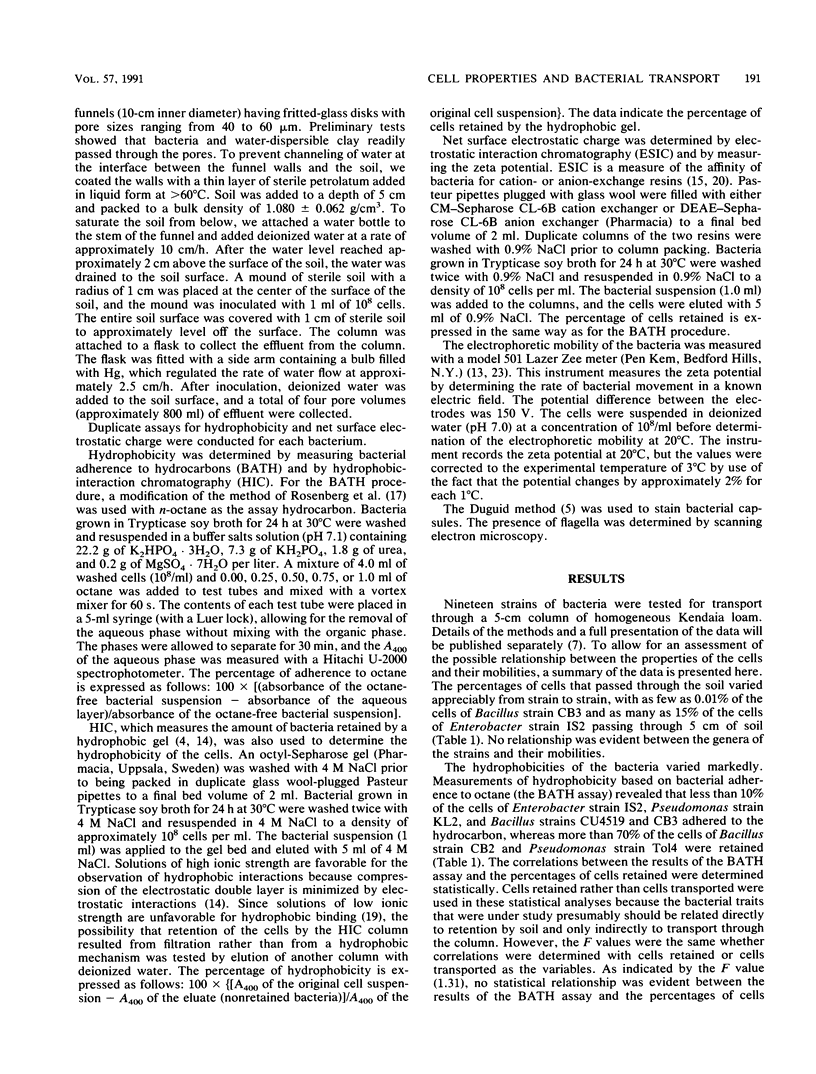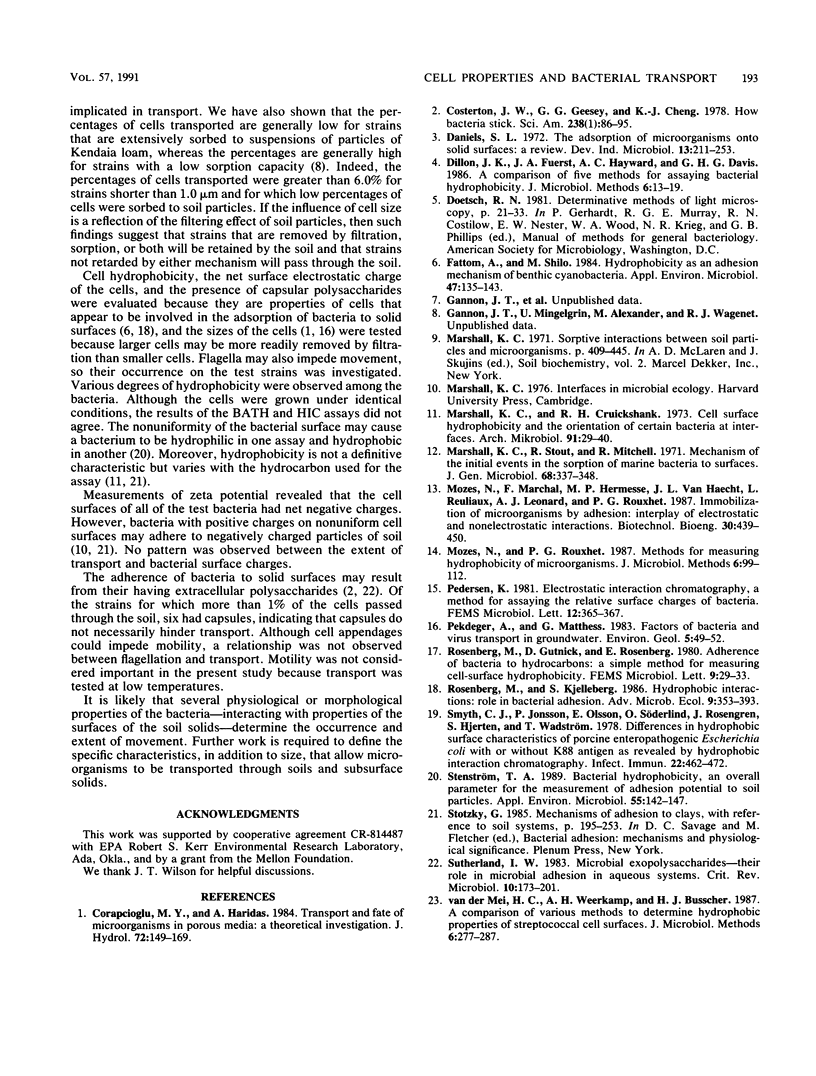Abstract
A study was conducted to relate the properties of Enterobacter, Pseudomonas, Bacillus, Achromobacter, Flavobacterium, and Arthrobacter strains to their transport with water moving through soil. The bacteria differed markedly in their extent of transport; their hydrophobicity, as measured by adherence to n-octane and by hydrophobic-interaction chromatography; and their net surface electrostatic charge, as determined by electrostatic interaction chromatography and by measurements of the zeta potential. Transport of the 19 strains through Kendaia loam or their retention by this soil was not correlated with hydrophobicities or net surface charges of the cells or the presence of capsules. Among 10 strains tested, the presence of flagella was also not correlated with transport. Retention was statistically related to cell size, with bacteria shorter than 1.0 μm usually showing higher percentages of cells being transported through the soil. We suggest that more than one characteristic of bacterial cells determines whether the organisms are transported through soil with moving water.
Full text
PDF



Selected References
These references are in PubMed. This may not be the complete list of references from this article.
- Borkman R. F., Hibbard L. B., Dillon J. The photolysis of tryptophan with 337.1 nm laser radiation. Photochem Photobiol. 1986 Jan;43(1):13–19. doi: 10.1111/j.1751-1097.1986.tb05585.x. [DOI] [PubMed] [Google Scholar]
- Costerton J. W., Geesey G. G., Cheng K. J. How bacteria stick. Sci Am. 1978 Jan;238(1):86–95. doi: 10.1038/scientificamerican0178-86. [DOI] [PubMed] [Google Scholar]
- Fattom A., Shilo M. Hydrophobicity as an adhesion mechanism of benthic cyanobacteria. Appl Environ Microbiol. 1984 Jan;47(1):135–143. doi: 10.1128/aem.47.1.135-143.1984. [DOI] [PMC free article] [PubMed] [Google Scholar]
- Marshall K. C., Cruickshank R. H. Cell surface hydrophobicity and the orientation of certain bacteria at interfaces. Arch Mikrobiol. 1973 Apr 8;91(1):29–40. doi: 10.1007/BF00409536. [DOI] [PubMed] [Google Scholar]
- Smyth C. J., Jonsson P., Olsson E., Soderlind O., Rosengren J., Hjertén S., Wadström T. Differences in hydrophobic surface characteristics of porcine enteropathogenic Escherichia coli with or without K88 antigen as revealed by hydrophobic interaction chromatography. Infect Immun. 1978 Nov;22(2):462–472. doi: 10.1128/iai.22.2.462-472.1978. [DOI] [PMC free article] [PubMed] [Google Scholar]
- Stenström T. A. Bacterial hydrophobicity, an overall parameter for the measurement of adhesion potential to soil particles. Appl Environ Microbiol. 1989 Jan;55(1):142–147. doi: 10.1128/aem.55.1.142-147.1989. [DOI] [PMC free article] [PubMed] [Google Scholar]
- Sutherland I. W. Microbial exopolysaccharides -- their role in microbial adhesion in aqueous systems. Crit Rev Microbiol. 1983;10(2):173–201. doi: 10.3109/10408418209113562. [DOI] [PubMed] [Google Scholar]


